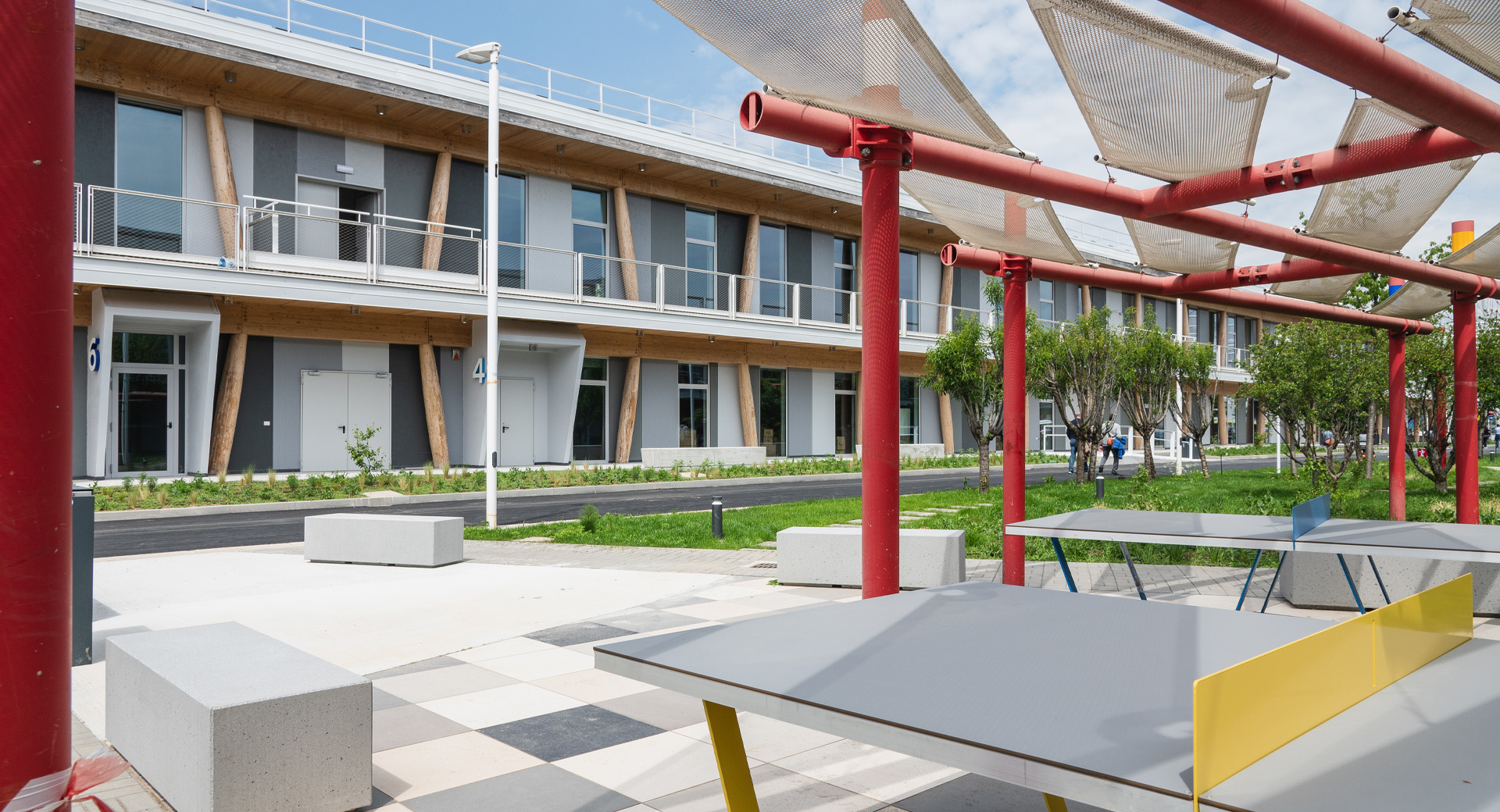Property redevelopment
Stecche
Type
Location
MIND – Milan innovation District
Year
2022
Client
Lendlaese
Head Designer
Arch. Marco Vigo, Ing. Giorgio Piliego
Professional services
Concept, architectural project
Stecche
The intervention envisages a series of actions to repurpose the existing temporary buildings and make them compliant with regulations, in order to transform them into permanent buildings for new uses such as offices, laboratories and services. The design project for the ‘Stecche’ (slat-shaped) buildings is also inspired by the same philosophy guiding the design for the Reception building: these first cells of the Start Up Village project, contain the DNA of Mind.
Within the architectural design this is translated into the full recovery of the existing wooden structures, which symbolically acquire – as with the wooden finish of the Reception – both the recovery and recycling of the existing material (typical of the circular economy) as well as the recovery and exploitation of the former World Expo’s identity. Alongside the preservation of parts of the existing building, the architectural design focuses on the overlapping of interventions that make the buildings iconic and immediately recognisable: new layers that re-interpret the innovation and creativity of Mind.
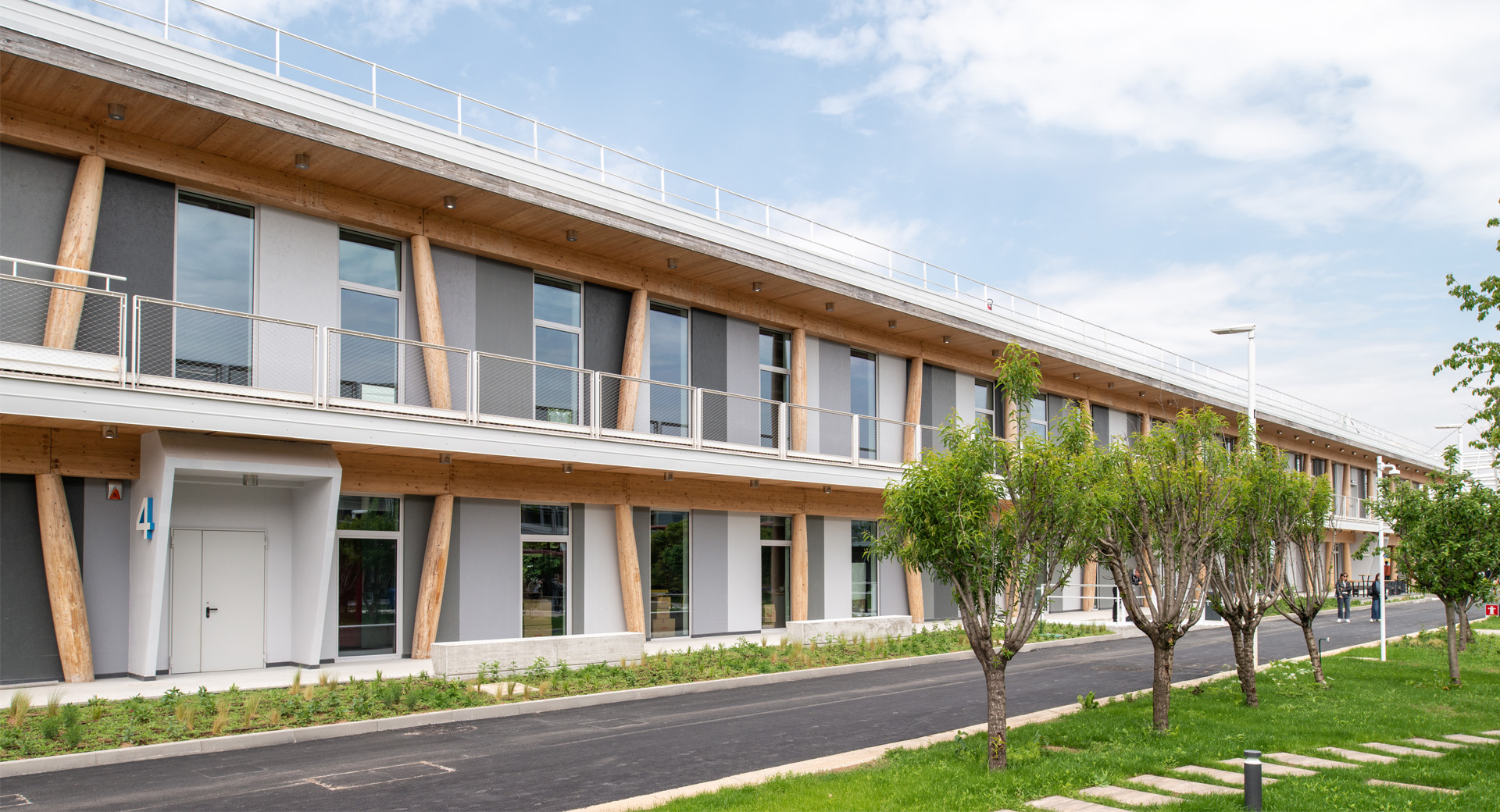
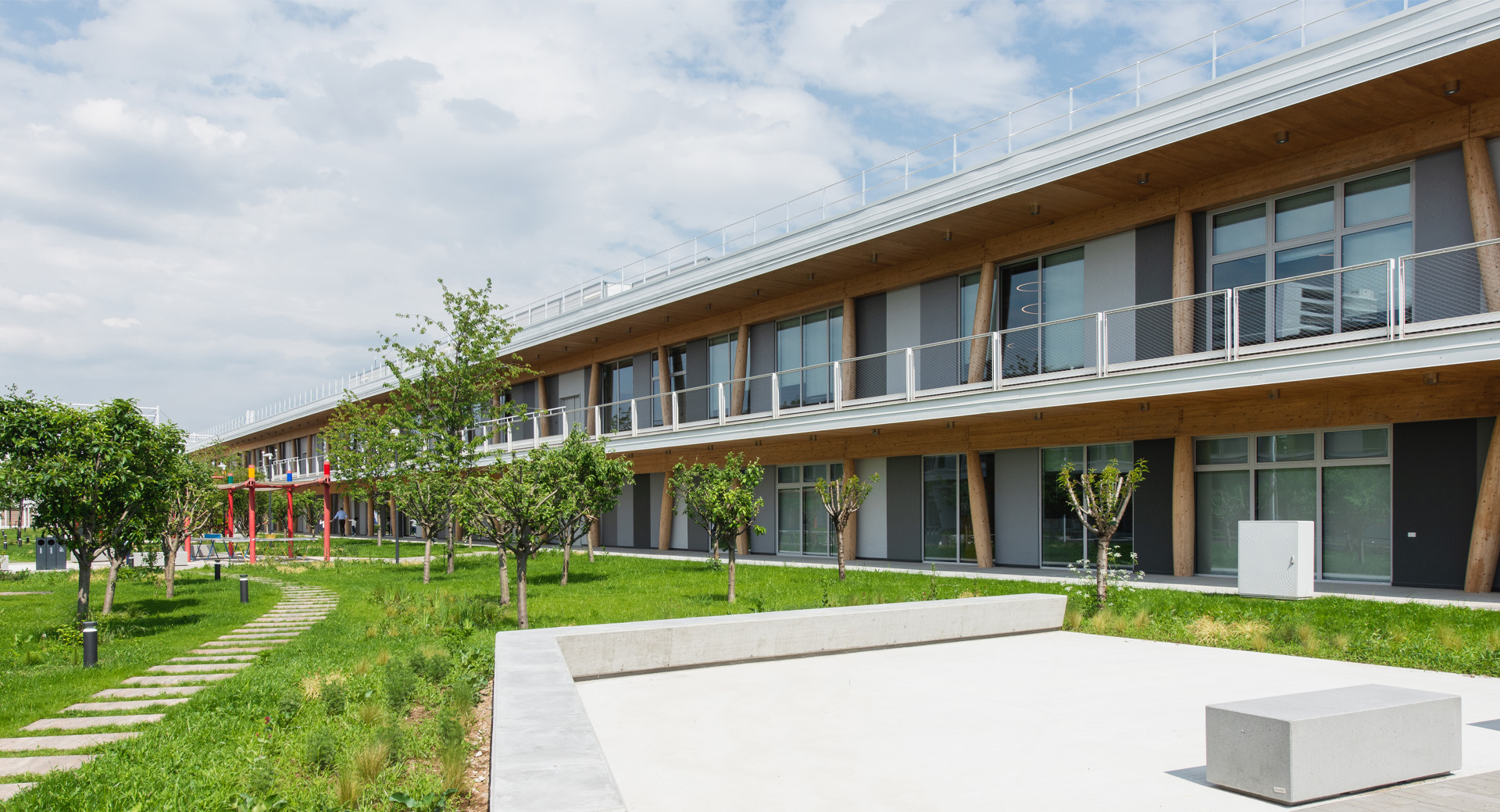
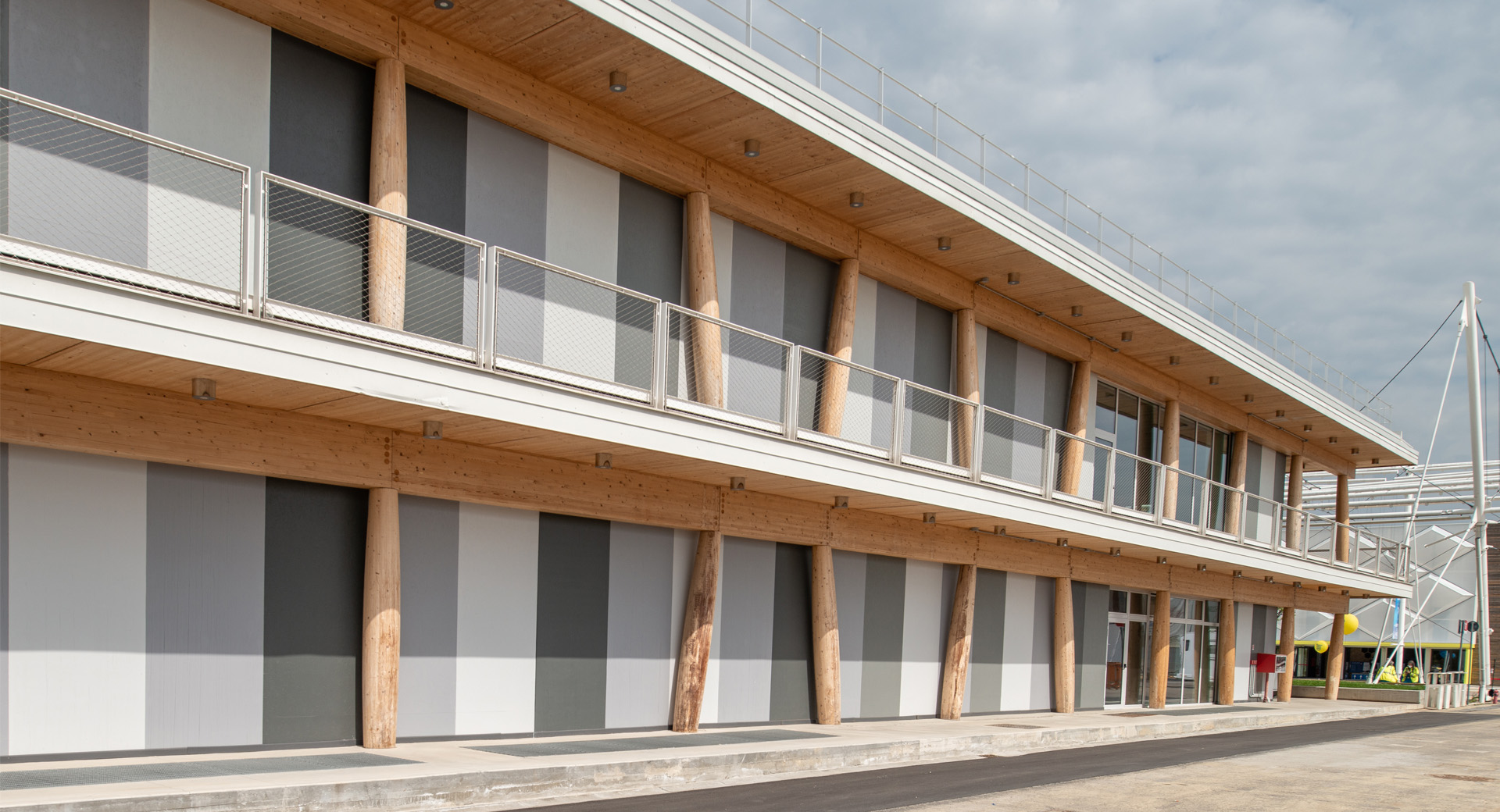
In fact, the external finish of the vertical facades has been graphically redesigned, which, following the bar code model, renews the image of the building, making it innovative and symbolic. The rhythm of the colour scale that characterises the ‘bar code’ creates striking visual glimpses, capable of varying significantly depending on the perspectives from which they are observed. In addition, in conjunction with the existing stairwells, the design envisages the introduction of access doors jutting out from the building, made using a drywall structure and fibre reinforced concrete slabs to indicate the main accesses along the facade and thus facilitate way-finding for users.
However, for the interior spaces – still in line with Mind’s founding principles – the ground floor is kept highly permeable, incorporating a range of social functions, such as communal spaces, food courts, gyms and services, and bicycle parking. These spaces are flanked by an outdoor green area, called hortus, intended as an area for relaxation that extends the ground floors, visually permeable, with collective functions such as public space fixtures, seating, outdoor meeting areas and spaces for playing sports. This area, acting as an informal incubator of ideas, encourages iteration among users, facilitating meet-ups, generating connections and thus increasing the sense of community.
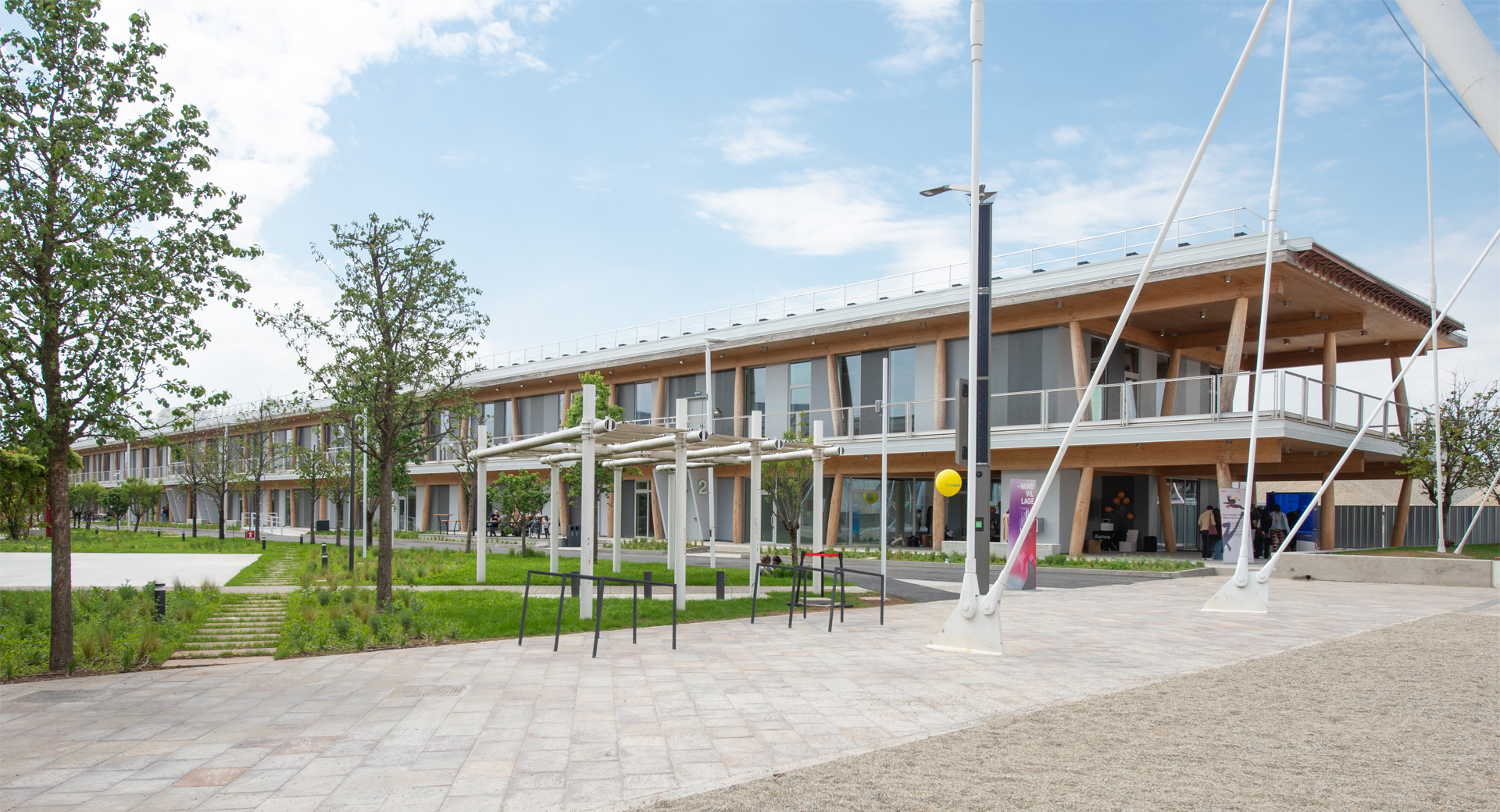
Highly re-configurable, flexible open spaces are envisaged on the first floor. However, given the numerous stairwells, there is the possibility of dividing up the interior spaces into smaller units in order to accommodate multiple users. The outdoor service and connection spaces, characteristic elements of the building, have been transformed into large, usable verandas that enjoy a view over the hortus (from above), and which enable not just permeability between indoor and outdoor spaces, but also connection and interaction between users.
